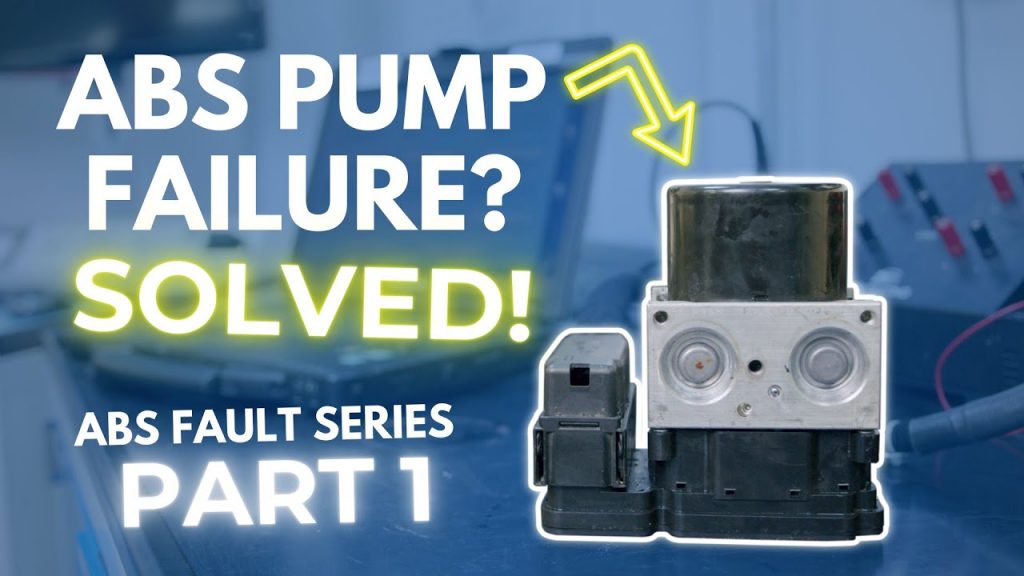Title: Comprehensive Guide to Automatic Packing Line Repair Services and ABS Pump Failure Symptoms – How to Test and Fix!
Description:
Welcome to our comprehensive guide on Automatic Packing Line Repair Services and ABS Pump Failure Symptoms. With so many ABS fault codes meaning the same thing, it can be challenging to keep up. In this informative video, Tim will walk you through the common symptoms of ABS pump failure, provide step-by-step instructions on how to test and fix the issue, and offer valuable insights to help you understand the process better.
Introduction:
In this video, we dive deep into the world of Automatic Packing Line Repair Services and ABS pump failure symptoms. Whether you’re a professional repair technician or a DIY enthusiast, understanding these symptoms and knowing how to test and fix ABS pump failures is crucial.
Video Content:
1. Understanding ABS Pump Failure Symptoms:
– Tim will explain the various symptoms associated with ABS pump failure, including warning lights, unusual sounds, and loss of brake pressure.
– Learn how to identify these symptoms in your vehicle and the importance of addressing them promptly.
2. Testing ABS Pump Failure:
– Tim will guide you through the process of testing your ABS pump to confirm if it’s the cause of the issue.
– Discover the necessary tools and techniques required for accurate testing.
3. Fixing ABS Pump Failure:
– Once the ABS pump failure is confirmed, Tim will provide detailed instructions on how to fix the issue.
– Learn about the common repair methods, potential challenges, and helpful tips to ensure a successful repair.
Remember to Like, Subscribe, and Share this video with fellow automotive enthusiasts to spread the knowledge!
Additional Tags and Keywords: Automatic Packing Line Repair, ABS Pump Failure, ABS Pump Failure Symptoms, ABS Fault Codes, Automotive Repairs, Brake System, Brake Pressure, Vehicle Maintenance, DIY Repairs.
Hashtags: #AutomaticPackingLineRepair #ABSPumpFailure #DIYAutomotiveRepairs #VehicleMaintenance #BrakeSystemFix
Note: For the best viewing experience, please watch the video in its entirety and follow along with the provided instructions. Stay safe and happy repairing!
Title: ABS Pump Failure Symptoms – How To Test And Fix!
Introduction:
The Anti-lock Braking System (ABS) is a crucial component of modern vehicles that enhances their safety by preventing wheels from locking up during braking. However, like any mechanical part, the ABS pump can experience failures over time. Recognizing the symptoms of ABS pump failure is important for maintaining the overall functionality and safety of your vehicle. In this article, we will discuss the symptoms of ABS pump failure and provide guidelines on testing and fixing the issue.
1. Unusual Brake Pedal Behavior:
One of the primary symptoms of ABS pump failure is an erratic brake pedal behavior. If you notice the brake pedal feels spongy, sinks to the floor, or requires excessive force to engage, it could indicate a problem with the ABS pump. Additionally, if the pedal pulsates or vibrates during braking, it may be a sign of ABS pump failure.
2. Illuminated ABS Warning Light:
A lit ABS warning light on your dashboard is a clear indication of an issue with the ABS system. If the ABS pump has failed, the warning light will remain illuminated even after starting the vehicle. Ignoring this warning can compromise your safety on the road, so it’s essential to address the problem promptly.
3. Loss of ABS Functionality:
ABS pump failure can result in the loss of ABS functionality. You may notice that the ABS system no longer engages during sudden or hard braking. This can significantly affect your vehicle’s ability to maintain stability and control during emergency situations.
4. Strange Noises:
When the ABS pump begins to malfunction, you may hear unusual noises coming from the braking system. These noises can range from grinding or whining sounds to continuous humming or buzzing. Any abnormal noise from the ABS system should be investigated immediately to prevent further damage and ensure your safety.
Testing and Fixing ABS Pump Failure:
1. Diagnostic Scan:
To determine if the ABS pump is the cause of the issue, a diagnostic scan using an OBD-II scanner is recommended. This scan will retrieve any stored error codes specific to the ABS system, providing valuable information for troubleshooting.
2. Visual Inspection:
Perform a visual inspection of the ABS pump and its associated components. Look for signs of leaks, damaged wires, or loose connections. Address any noticeable issues accordingly.
3. Bleeding the Brake System:
Air trapped within the brake lines can cause ABS pump failure symptoms. Bleeding the brake system using the manufacturer’s recommended procedure can help remove air pockets and restore proper functionality.
4. Professional Repair or Replacement:
If the ABS pump is found to be faulty, it might require professional repair or replacement. Consult a qualified mechanic or automotive service center to assess the severity of the issue and perform the necessary repairs.
Conclusion:
Recognizing the symptoms of ABS pump failure and taking appropriate action is crucial for ensuring your vehicle’s safety. By paying attention to unusual brake pedal behavior, illuminated warning lights, loss of ABS functionality, and strange noises, you can identify potential ABS pump problems early on. Remember to perform a diagnostic scan, visually inspect the system, bleed the brake system if necessary, and seek professional assistance for repair or replacement. Promptly addressing ABS pump failure symptoms will help maintain optimal braking performance and keep you safe on the road.Automatic Packing Line
#ABS #Pump #Failure #Symptoms #Test #Fix


